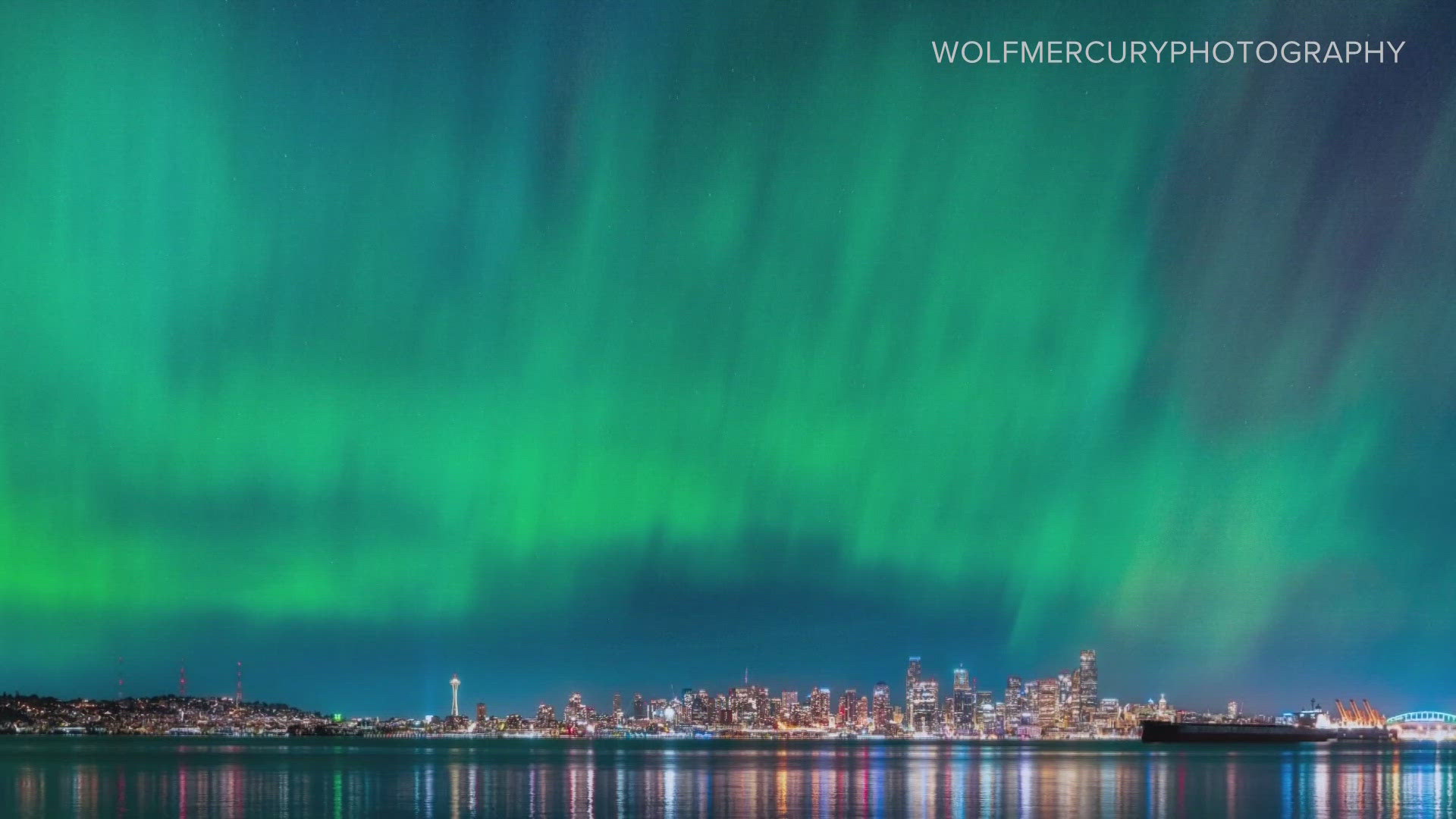SEATTLE — Did you miss the aurora borealis last week? That's OK – the type of storm that pushed the aurora borealis much further south than it's typically seen is likely to happen more often as the sun approaches its solar maximum.
The storm that produced the aurora borealis last week is called a coronal mass ejection, or CME, which is a type of geomagnetic storm that sends "tons" of solar material off into space, carrying a strong localized magnetic field with it, according to Shawn Dahl, who is a service coordinator for the Space Weather Prediction Center (SWPC). The storm carries electrically charged particles that collide with the earth's magnetosphere and glow different colors when they shed energy, according to NASA's Jet Propulsion Lab.
This type of storm is expected to occur again as the sun reaches the peak of its 11-year cycle, Dahl said. The solar cycle occurs as the sun's north and south magnetic poles switch places. As the magnetic fields on the sun change, activity increases, according to NASA. The solar maximum takes place around the middle of that cycle.
"We're at the solar maximum time frame now – not even quite there yet," Dahl said. "So the expectation of having more of these types of events will continue."
This solar cycle has been "much more active" than experts had initially predicted, Dahl said, and even after the sun reaches the peak of its solar cycle, impacts will extend well into 2025 and 2026, including the potential for powerful aurora borealis-causing coronal mess ejections.
The SWPC measures storms on a scale of one to five, and last week's storm reached a five on the scale. A five is the peak of what the agency can measure, but G5 storms can range widely in how powerful they are. Storms that are much more powerful than the one we saw last week have the potential to impact Earth.
"We need to be ready for the (storm) that's going to be five to 10 times stronger," Dahl said.
Different types of solar storms, including CMEs, are blasting from the sun at all times – it's when the solar material is directed at the earth that we see an opportunity for aurora borealis viewing. The SWPC can predict these storms three to four days in advance due to satellites that can detect space weather events and measure solar wind. This is also vital to protect technology and services that people rely on that can be thrown into chaos when geomagnetic storms make impact.
Technological impacts of space weather
Technology like satellites, GPS systems, communications systems and power grids can all be impacted by geomagnetic storms, Dahl said. An event like a CME can change the structure of Earth's outer atmosphere, where signals pass back and forth between satellites and technology on the ground.
Dahl said the SWPC is more prepared to notify the public, and commercial industries of when a geomagnetic storm will impact Earth than ever before, largely due to investments and technological advancements made over the last 10 years. This advanced notice by the SWPC can allow airlines, satellite operators and other sectors impacted by space weather to prepare for and mitigate impacts to their technology.
"This was the most prepared for and successfully mitigated extreme space weather storm in history," Dahl said. "If this preparedness and actions were not in place, this storm could have been much more consequential than people realize."

